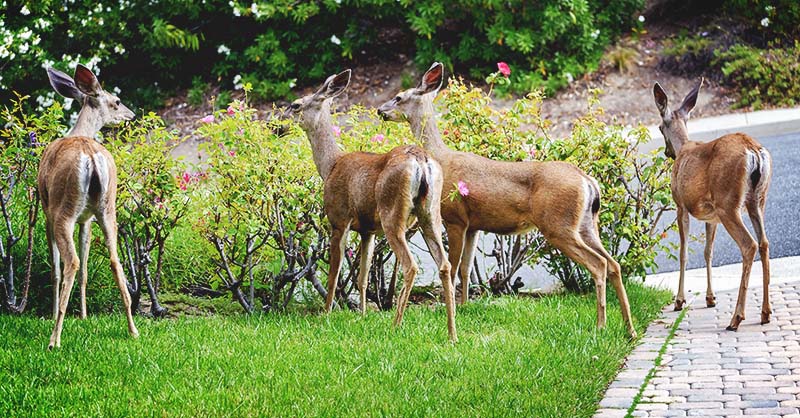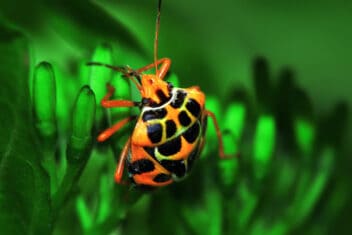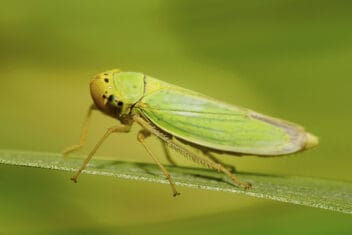Deer can quickly devastate an entire crop, your beautiful flower garden or the tomatoes on your porch. As prey animals, they travel quickly through areas, grabbing a bite here and a mouthful there, with no regard for all your hard work. Deer proofing your gardens is possible, but you need to know how to sort the tactics that work from the old wive’s tales that don’t.
I’ve had a lot of experience deer proofing gardens. In a way, I am my own worst enemy. As a wildlife rehabilitator, I raise six fawns a year. After they’re released, they tend to come back to “visit”. Every year they test me as I work to have both happy deer and healthy gardens.
Since I’m something of an expert thanks to all my experience, I’m going to share with you the best tactics and strategies that I’ve found to help you have a thriving garden while not harming your local deer population.
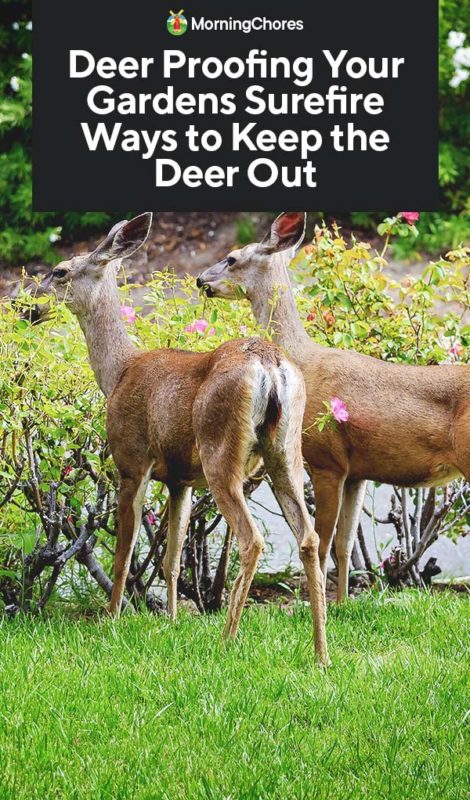
Fences Are Your Best Friend
We’ll start with the bottom line, which is that fencing is your best bet when it comes to deer proofing your gardens. Since fencing requires some expense and labor to install, if your budget is stretched, I suggest you start small with a section at a time. You can start with a small area that covers your most vulnerable plants. For instance, you might choose to fence a garden for tender greens or sweet corn.
There are several types of fencing you can use. The thing to remember is that deer can jump high and they can jump wide, but they can’t do both at the same time. Your fencing should make one or the other difficult.
A Good, Solid Wire Fence
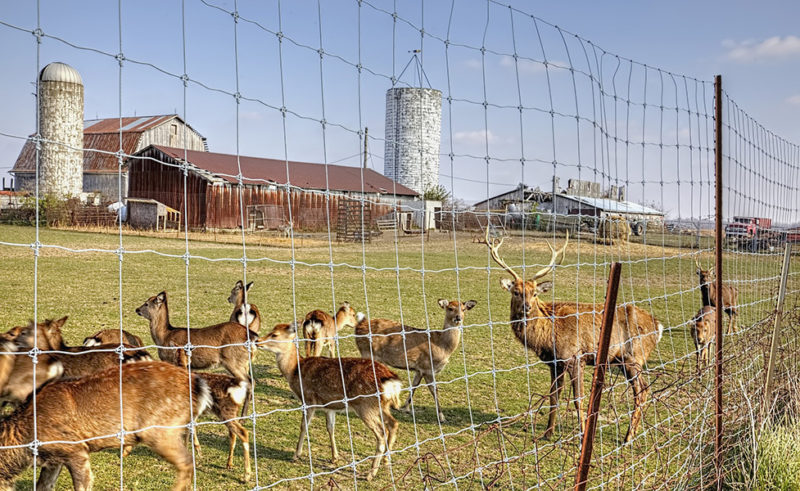
A strong fence that is tall and sturdy is going to do the best job. It will also be the most expensive and take the most labor, but a good fence will last many years.
Wire fencing that is eight feet tall and attached to solid wood posts is the best all-around bet. If you set the wire at a 45-degree angle facing outward from the garden you have an added layer of protection.
If your deer presence is intense, like it is in some urban areas, you can add a strand of electric about two feet away from the fence at a height of 30 inches. A shock on the nose will help keep them from even thinking about what’s beyond the fence.
Double Wire Fence
Some zoning restrictions put limits on fence height or you may have neighbors that would object. If an eight-foot fence is not practical where you are, then you may want to consider a double fence. This type of design works because deer have poor depth perception. They are afraid to jump the first fence and be trapped.
For a double fence, install two four foot fences. The interior fence will encompass the garden area. From there, come out five feet and then fence in the garden and the first fence.
This will make a pathway around the garden. The downside is that it will need to be mowed or weeded. The upside is that you can also use it as a run for dogs or chickens. Bonus: the chickens will help keep down insect pests and the dogs are an added deer deterrent.
Electric Netting
If you have livestock, you are probably familiar with electric fence netting. There are several types of electric netting made just for deer proofing gardens. These work especially well for larger areas such as orchards or berry plantings.
An electric fence works by giving a shock to anything that touches the fence. Take care, I always manage to shock myself. Often after a few shocks, the deer learn their lesson and leave the area alone.
Netting comes in temporary and permanent types. The permanent models are more expensive and require more upkeep, but of course, they last longer.
Netting has several advantages. It provides both a physical barrier and gives a shock that says “stay back!”. Like strand electric fence, netting can also be moved easily to meet your needs.
Netting also has some drawbacks. It may sag in the middle between posts, making it look less intimidating to the deer. It also can get tangled easily when moving it or putting it up. I always have a problem with rolling and unrolling netting without tangles.
In addition, an electric fence requires a power source. It can run on solar or conventional electric, and requires batteries and cables to connect to the fence.
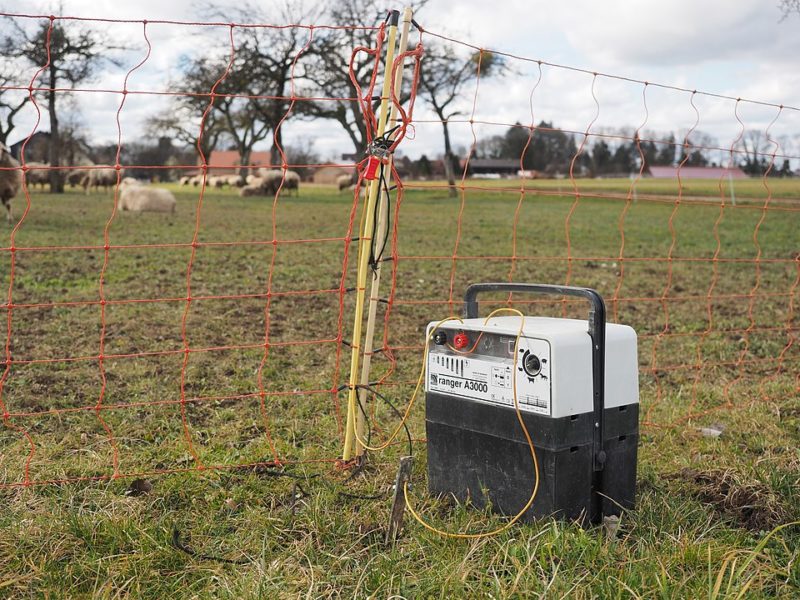
With any electric fencing, you need to be conscious of who is around it. If you have small children, this may not be the best option for you.
Electric Strand or Rope Fencing
I recommend electric netting over a strand electric fence for several reasons. The netting offers a more visual barrier and gives deer pause for thought. The strand wire is harder for the deer to see, so it’s less of a deterrent, and potentially dangerous.
A good example of this is a call I received last season. A young buck had gotten into a garden in an urban area by crawling under the electric fence. The landowners had been monitoring with cameras and the video was hysterically funny.
Sadly, the amount of damage the young buck did in his panic when he couldn’t figure out how to get back out was not fun. I had the owners cut off the electricity and quietly took off the top strands. Then, I had to go around behind him so he would jump the fence to get back out. Quite the fiasco.
Stockade Fencing
Stockade fencing, such as privacy or panel fencing, works best in small areas. It’s expensive and more difficult to install. You might consider a professional fence company if you opt for this type of fence.
Stockade fencing is great if you have a small area such as a courtyard or city lot to fence in. It will protect your landscaping or vegetable plot, and give you privacy at the same time. It’s a good-looking option in addition to one that will help with deer proofing your gardens.
The advantage of a solid fence is that the deer can not see through to the other side. Since they can not see through it, they’re usually afraid to jump over. With a stockade fence, you can get away with it only being six feet tall.
Plastic Deer Netting
This is a lightweight netting that comes in various sizes and strengths. It is inexpensive compared to other fencing methods. It works best on the occasional deer coming through, but in my experience, plastic mesh netting will not stand up to a serious deer threat. They’ll discover that they can push it and it will give or tear.
One thing that helps improve your plastic mesh is to tie blue or green ribbon or string to it. Using the colors blue and green is important because they are colors that deer see well.
I think mesh works best if you use it in small areas or to protect a favorite plant or tree.
Natural Fencing
This is the concept used by many modern zoos. In effect, it’s the strategy of using natural elements to provide barriers.
While it is not practical to build a big moat, we can utilize elements of the concept. For instance, some animals with hooves, such as deer, elk, and moose, are not always willing to travel over uneven surfaces.
Placing large rocks around the perimeter of your garden makes these animals feel unsteady. Combined with a shorter fence, this will help deter them from going into your garden.
Deer Resistant Gardening Techniques
Resistant Plants
Many of our favorite vegetables are naturally deer resistant. Tomatoes and potatoes are not appealing to deer palettes.
You can also plant deer-resistant plants around the perimeter of your garden as a natural fence. This way they lose interest before entering the garden.

Deer dislike plants with heavy smells. This includes many herbs such as lavender, rosemary, hyssop, and mints. You can plant these herbs alongside your more vulnerable crops, such as greens.
Deer are primarily browsers and eat forbs (non-woody plants that aren’t grasses) and woody plants. They don’t eat grasses as a mainstay. If your garden is surrounded by a nice lawn of grass, it may keep them from wandering over as much.
Mow Your Grass
Deer like to be around brush and low trees, especially cedars and pines which give them areas to hide. During the day they will bed down and chew there cud. In early morning and evening, they come out to graze and browse.
By keeping your yard mowed and brushed cleared out you will reduce deer incidents.
Repellents
There are many types of repellents that may deter deer. Some are homemade products and some are commercial ones.
Homemade Repellents
Human hair and soap are two natural repellents that have been traditionally suggested. These options don’t really work.
With habitat loss and urbanization, deer have become habituated to human scents. Often the deer who are invading your garden are living in your yard, neighborhood, and farm. They have become used to the scents and sounds of their human neighbors.
A mixture of eggs, milk, garlic, and cayenne might do the trick, though.
Commercial Repellents
Commercial products may have a better outcome. The most important aspect of using commercial products is the human. Human error is the biggest obstacle when using repellents.
The most important thing to remember is repellents need frequent application. Rain and sun will lower their effectiveness. The best products have something in them to help them adhere to the plant and be less prone to washing away.
Many repellents are not earth-friendly. Read the ingredients and look for products that are sustainable. There are some repellents that are OMRI certified.
Scare Tactics
There are numerous things to do that may scare away the deer. Or they may not. Luckily, many of them are inexpensive and worth a try.
- Hang aluminum pie pans along the exterior edge of the garden. It’s thought the sound and the reflection of them will scare the deer.
- Motion-activated water spray sometimes has good results. You can put a timer on your sprinkler for when deer are active. You can also purchase a system that goes off periodically. These come in a variety of sizes. The taller ones that shoot water down are more effective.
- Your family dog may also be a valuable scare tactic. Just the dog’s scent may help deter deer. Your dog’s barking may be the biggest deterrent. Keep in mind if your dog is confined to a yard, the deer will soon learn their boundaries and just walk around them.
Plant A Deer Garden
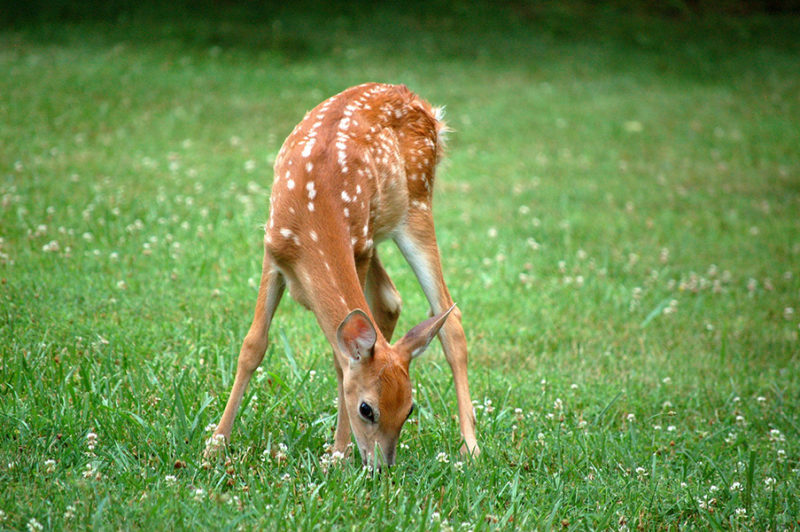
This may sound self-defeating but it is not. If you want to try deer proofing your gardens, you could make one just for the deer to use. I have 16 acres, which are basically a rectangle. I plant a wildlife garden in the backfield by a wooded area. When deer come out of the woods and into the field to eat, they basically walk into their own garden area.
I actually also use this garden area for my goats as well. I plant a variety of root crops, cover crops and beans. This gives both the goats and deer a three-season smorgasbord.
I figure if I am nice to them, they will be nice to me, and not eat my pretty red tomatoes!
Take Away for Deer Proofing Gardens
Gardening is an activity that should bring us joy and good eats. Wildlife has a right to enjoy a good life just like we do. So it’s important to have a win-win strategy. Just put in a little extra effort and you can keep the deer on their side of the garden!

